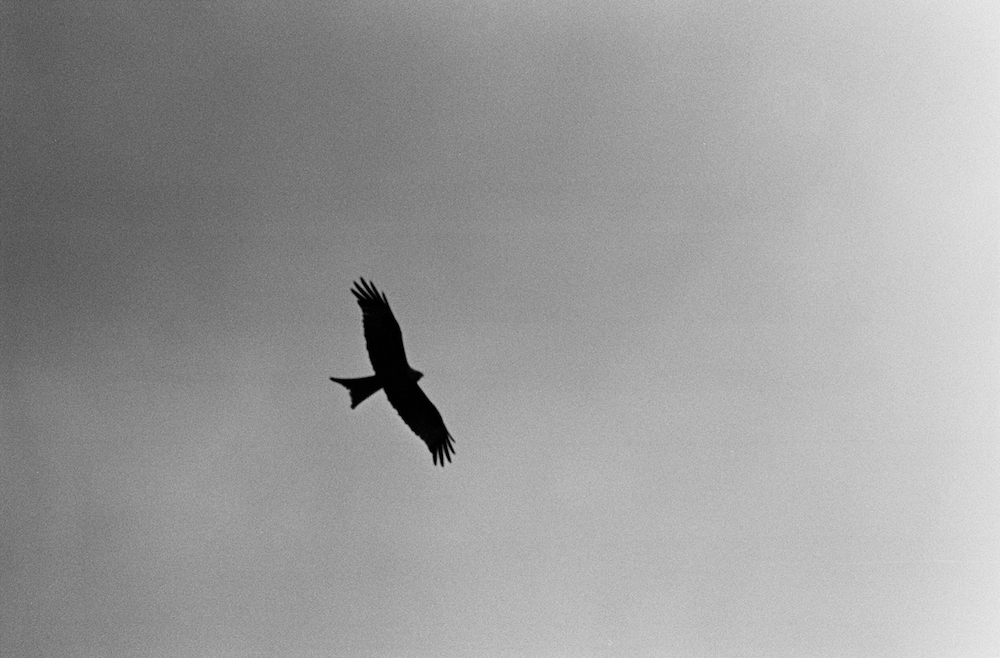Usedom: A winter diary
/By Paul Scraton:
We have travelled north to the Baltic in the lowest of low seasons, to reflect on the passing of another year and another decade at a place that has meant so much to us over the recent and not-so-recent past. It feels like we are the only ones here, in our thatched house divided into apartments, and we move quietly up the stairs despite knowing there is no-one around to disturb. We arrive after dark, so we know our location only from the little blue spot on the map, but the morning will come and we will step out onto the village’s quiet streets, to walk from one side of the island to the other.
The next morning, when we reach the harbour the view across the inland sea is obscured by the mist that has rolled in off the Baltic and covered the island. Is there any point to this? We ask ourselves the question, but still we press on, following a farmer’s track across the field to the lookout point. It is a gesture more of hope than expectation, for visibility is down to less than fifty metres, but we are rewarded. First we hear the call, loud and distinctive, sounding through the mist. And then we spot it, standing tall in the misty field. A white-tailed eagle, its distinctive beak visible even in this strange half-light. After a moment it takes flight, and we catch a momentary glimpse of its impressive silhouette, before it disappears into the mist and the clouds, soaring high and out of sight. Perhaps it manages to get high enough for a glimpse of the sun. We can only imagine.
It will be a day of shadowy apparitions, of figures emerging and retreating as we make the short walk that will lead us across the island from the lagoon to the sea. We leave the last of the village houses and enter a low landscape of fields, drained by ditches and surrounded by dykes, home to bulls, sheep and horses. In the distance, we spy a couple striding along a dyke-top path that my map tells me is a dead end. In the other direction, two cars meet at the end of a bumpy track beside a collection of tumbledown wooden buildings. I imagine a conversation through open windows and something in the boot, to be transferred from one car to the other.
You cannot help but summon scenes and images when the mist obscures almost everything that would normally be in sight. The footpath enters a forest, rising and falling between dense evergreen trees before we come across a brick house behind a high wall and metal gates. There are empty flagpoles in the garden, three of them, and they suggest a story, a history, that is unavailable to us in the mist. Unhappy is the land in need of heroes, and insecure is the land with too many flagpoles. But those poles were erected in a country that no longer exists, and however insecure we might be, not all of us are waving flags.
Across the main road and the railway tracks, we enter the resort, where the houses sit on low cliffs above the beach and dunes, with a view across the stilled waters of the Baltic Sea. The kiosks and beer gardens are shuttered and closed, but smoke rises from the chimneys of holiday homes and light shines behind net curtains in some of the windows. In the distance the mist curls around the white towers of a grand hotel, that seems less grand the closer we get. The walls are water-stained and the terrace canopies tattered, with grass poking through cracks in the paving stones and a handwritten note posted in a smudged window to tell us the bar is closed for the season.
In the 1920s this was the preserve of silent film stars, who travelled north from the studios of Berlin to take the water and the sea air. Now, at the start of the 2020s, the town was quiet, the posters outside the hotel advertising karaoke nights and tribute acts, and evenings with members of GDR-rock bands, the skeleton staff stalking the echoing halls in service of the handful of guests.
We walk through the dunes, past an old fishing boat long out of service, and for the first time we see the waters of the Baltic. At the beach, the sand, sea and sky blend almost into one as ghostly figures walk the sands. In the mist it has been a kind of half-light all day, and now even that is fading. It is as if the town, the hotels, and the island itself is just waiting. The new year has begun. A new decade. But not here. Not yet. Only when the mist lifts, and the sun starts to shine once more.
***
Paul Scraton is the editor in chief of Elsewhere: A Journal of Place and the author of Ghosts on the Shore: Travels along Germany’s Baltic coast (Influx Press, 2017) as well as the Berlin novel Built on Sand (Influx Press, 2019).














